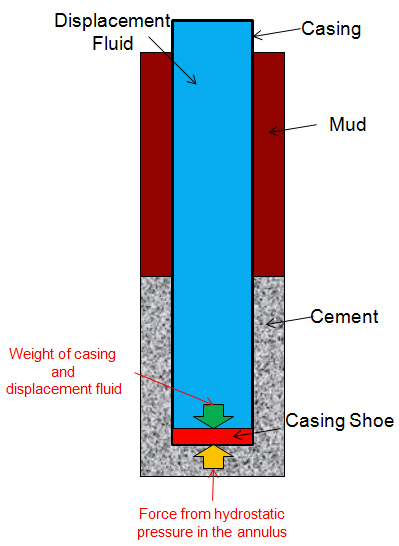During cementing operation, pumping cement and displacement fluid can lift the casing. Some people call "pump out of the well". This situation can be occurred and there are some reasons as follows:
• Lightweight casing string
• Large casing diameter
• High density of cement
• Low density of displacement fluid
• High annular pressure loss
• High pressure trapped in the annulus due to bridging
How is the casing lifted during cementing?
Under A Static Condition
The casing can be hydraulic out of hole due to unbalance of hydrostatic pressure. See the figure below for more understanding.

You can write in the mathematical equation like this.
∆F = (Wc+Wdf) – (HPann x A)
Where:
Wc = Weight of casing
Wdf = Weight of displacement fluid
HPann = Hydrostatic Pressure in the annulus
A = Cross section area of casing
Note: the equation neglects effect of frictional force and buoyancy effect.
If you get negative value, your casing will be lifted out of the hole.
You can read more about pressure and force from this article >> Pressure and force relationship.
Under A Dynamic Condition
While pumping, you need to consider pumping pressure because hydraulic pressure while pumping also forces against the cross section area of casing.

∆F = (Wc+Wdf) – (HPann x A + Ppump x a)
Where:
Wc = Weight of casing
Wdf = Weight of displacement fluid
HPann = Hydrostatic Pressure in the annulus
a = Cross section area of inside of casing
Ppump = pumping pressure
A = cross sectional area of casing
Note: the equation neglects effect of frictional force and buoyancy factor and buoyancy effect.




No comments:
Post a Comment